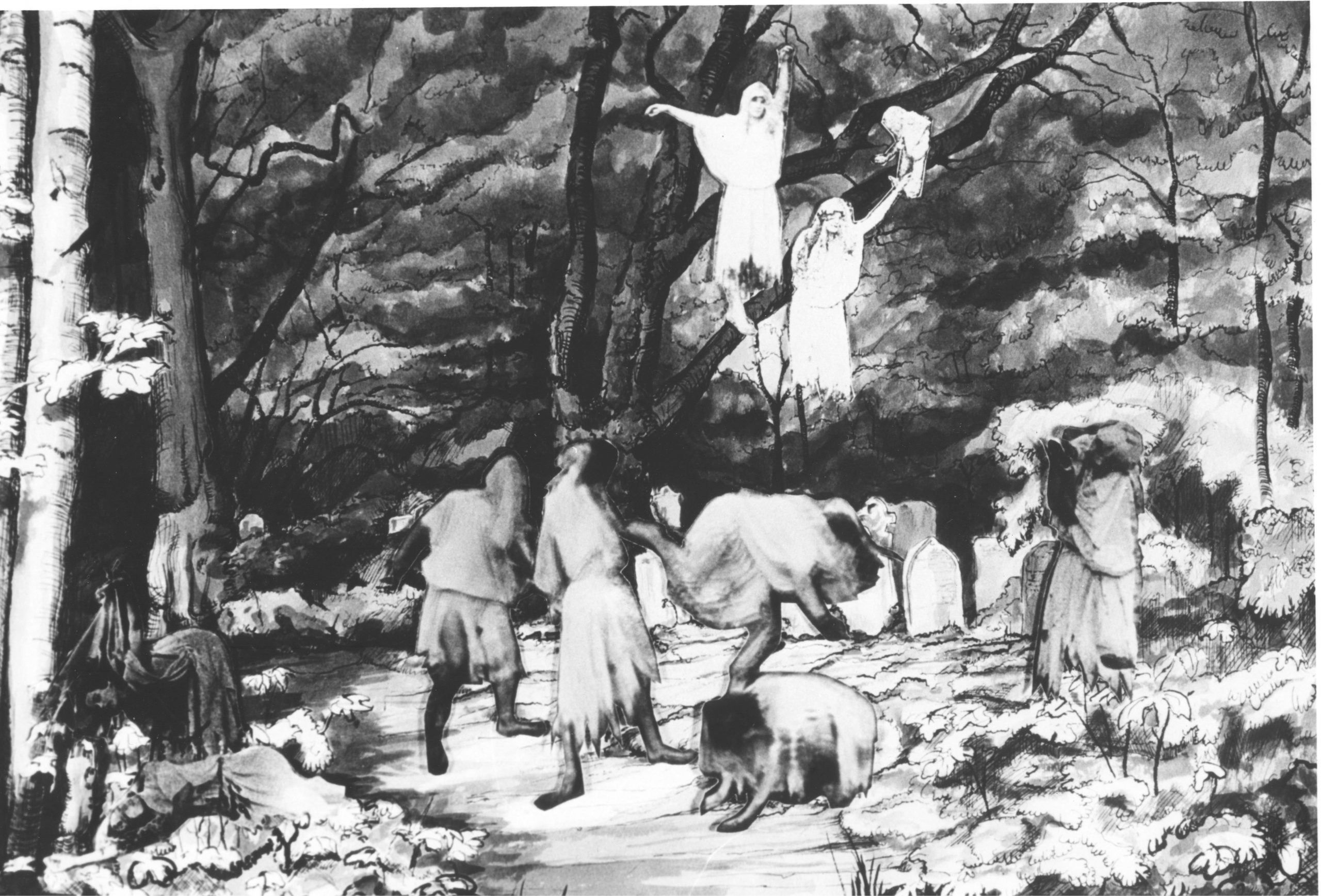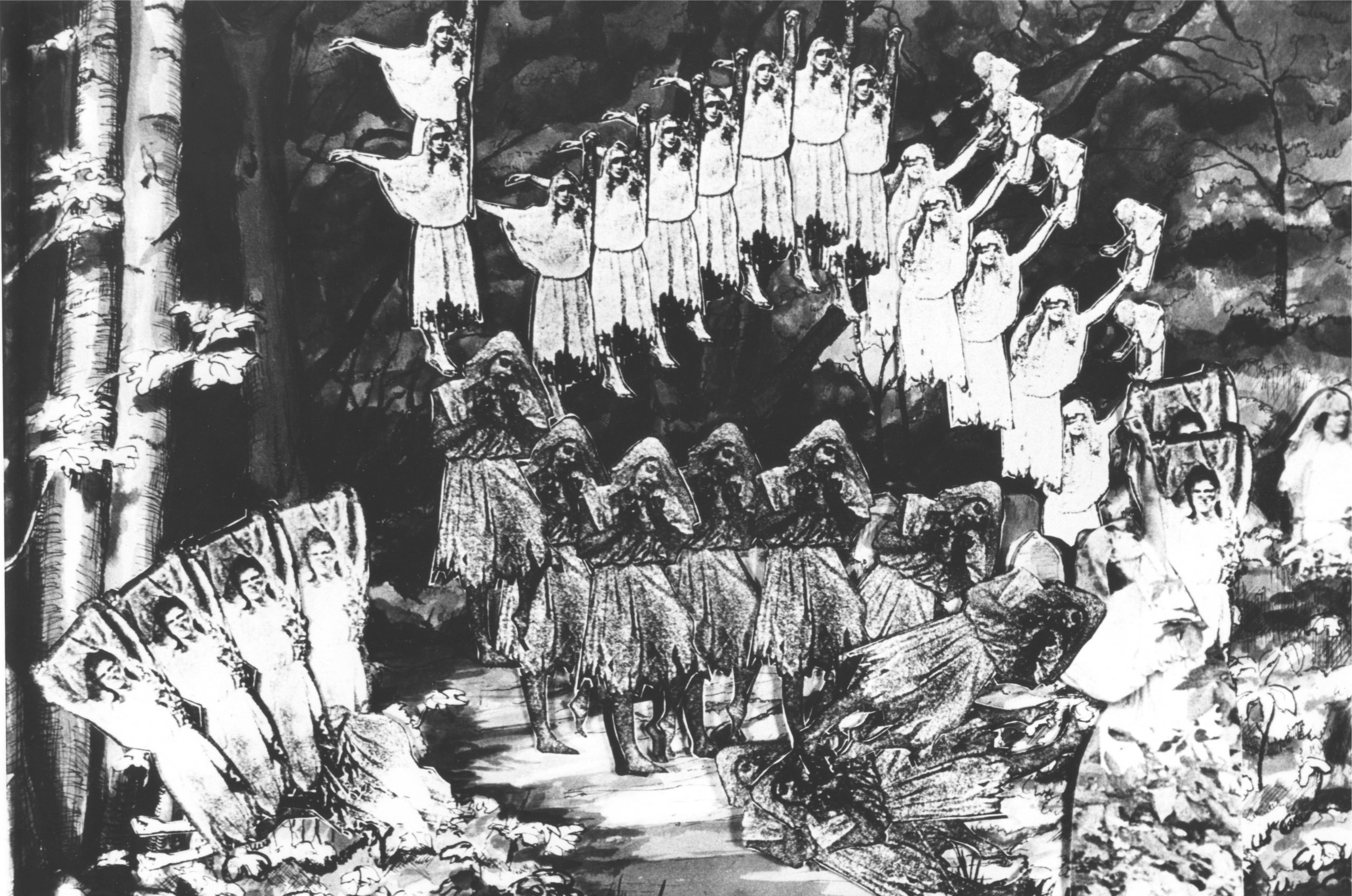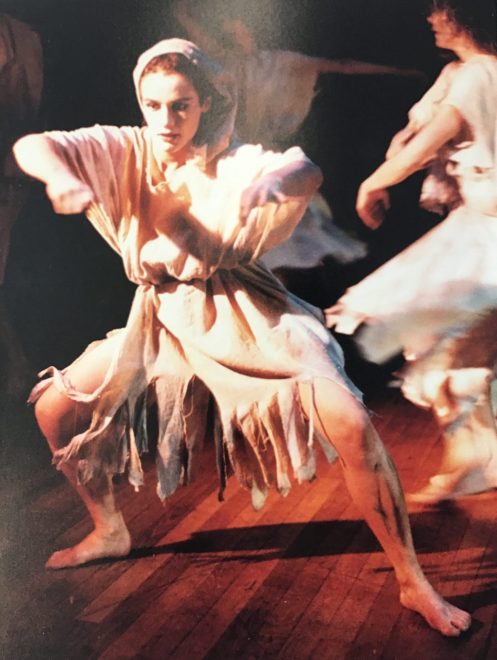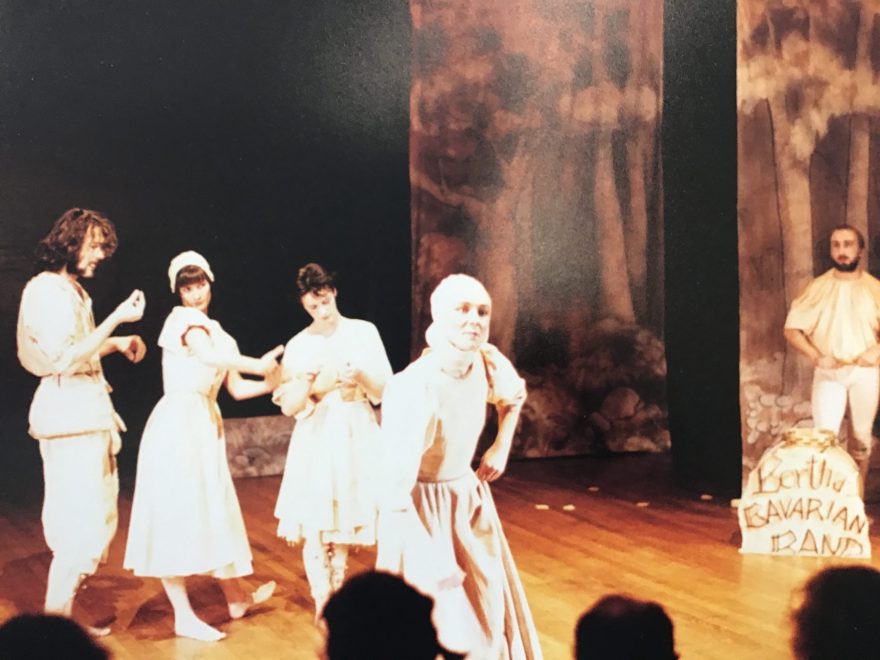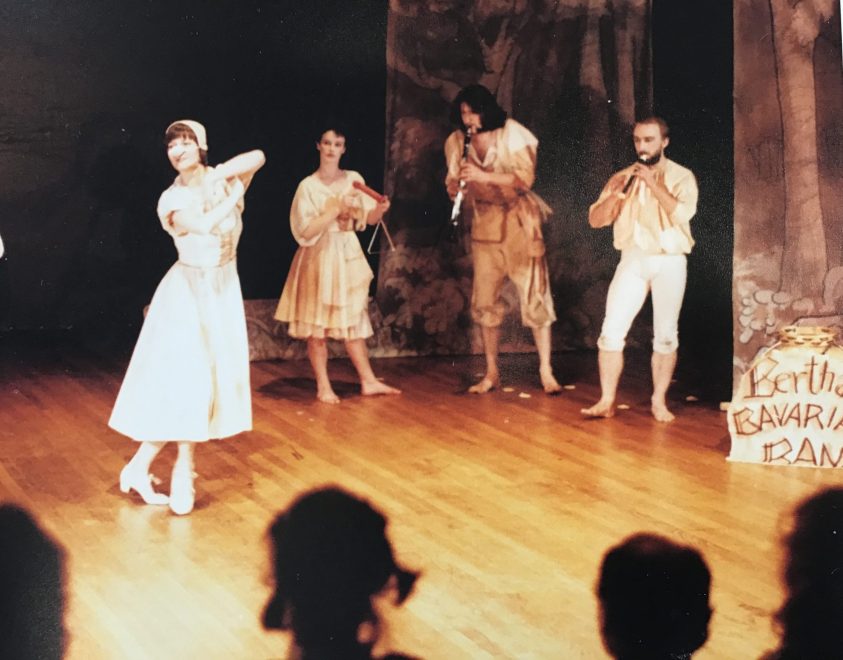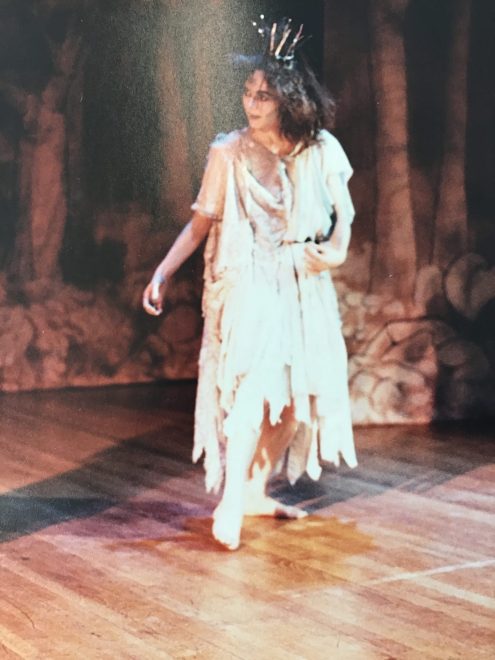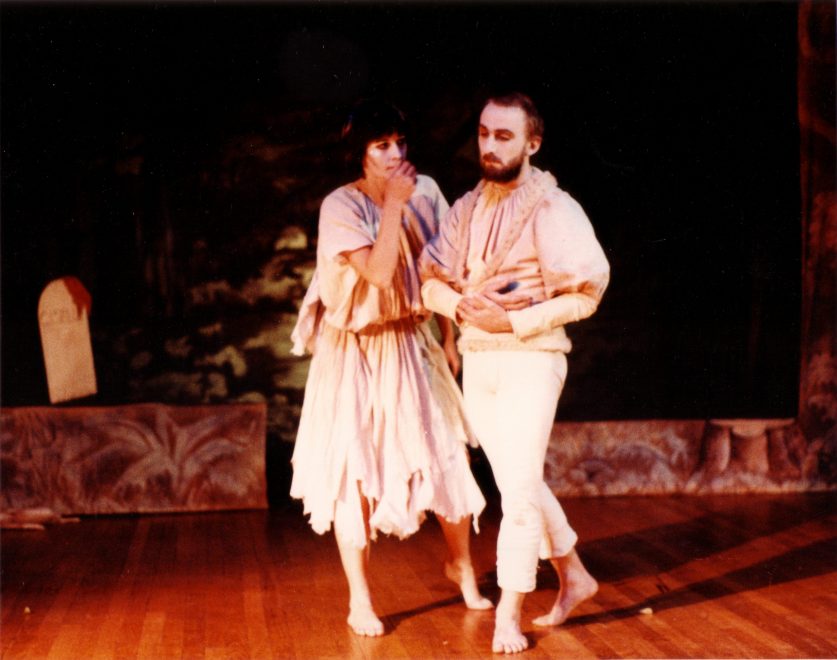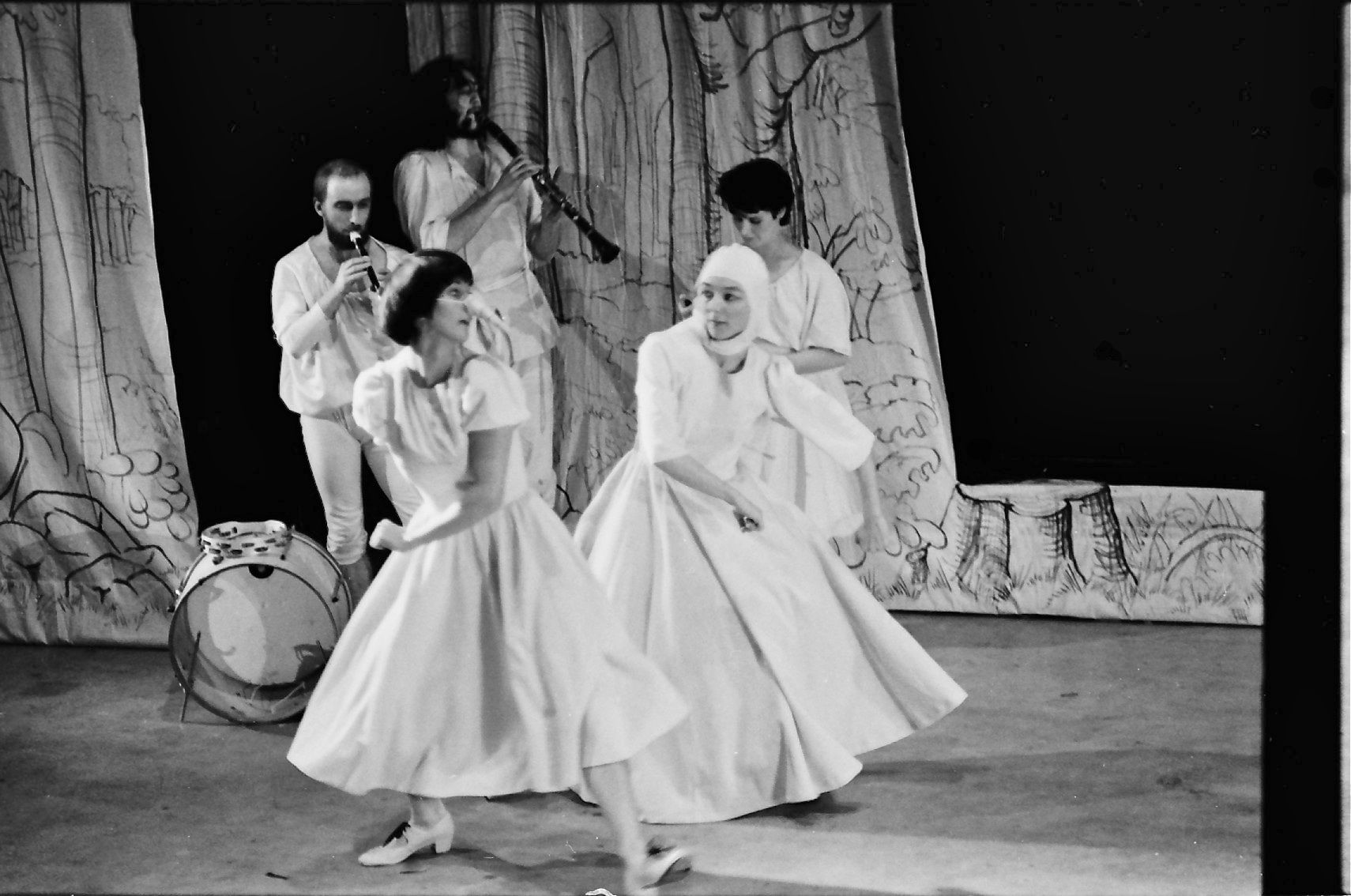
Jacky Lansley, Fergus Early, Suzy Gilmour, Cris Creek and Sue MacLennan in 'I, Giselle' (1980)
“In looking at Giselle, we wanted to question the stereotypes of the original story, while still retaining its power and excitement. Above all we wanted to remove Giselle from her eternal victim role, give her a voice and allow her to triumph. In our story, Giselle very soon discovers Albrecht’s duplicity, and is not taken in by him. It is not Giselle who goes mad, but Albrecht and then his fiancée Bathilde, and finally everyone else. Giselle does not die, but chooses to join Myrtha, the Queen of the Wilis, as the Sorceress’s apprentice. In the dance of death, it is Giselle who survives, all the rest who fade away. The other characters, too, have changes in emphasis, Giselle’s mother, Berthe, is seen as a healer, a woman of strength, rather than as the irritation fuss-pot of the tradition. Myrtha is seen as a powerful witch, very much in the tradition of Circe. For Albrecht, the role of the romantic hero becomes a trap he cannot escape, and Hilarion suffers a less severe fate than death – he is turned into a rabbit…
A lot of new dance has rejected everything associated with classical ballet, but we both have a background in ballet and we want to reclaim some of its positive elements and skills, particularly its theatrical quality, and use these in a new contexts. It is obvious that ballet, like most traditional arts, is immensely strong in this country, and attracts an enormous proportion of the available funding at the expense of new work. ‘I, Giselle’ is an attempt to challenge the tradition head on, taking a classical ballet and examining its politics, its ideology, its sexual roles, and reconstituting the whole in a vital and fresh way that has relevance for us today, and, we hope, for other people.”
Jacky Lansley and Fergus Early in the ‘I, Giselle’ programme
Choreographed, written and directed by Jacky Lansley and Fergus Early; music by Stephen Montague, after Adolphe Adam; design by Craig Givens; song lyrics by Suzy Gilmour; photography and artwork for Act II slides by Jeanette Iljon; performed by: Suzy Gilmour, Jacky Lansley, Fergus Early, Cris Creek and Sue MacLennan.
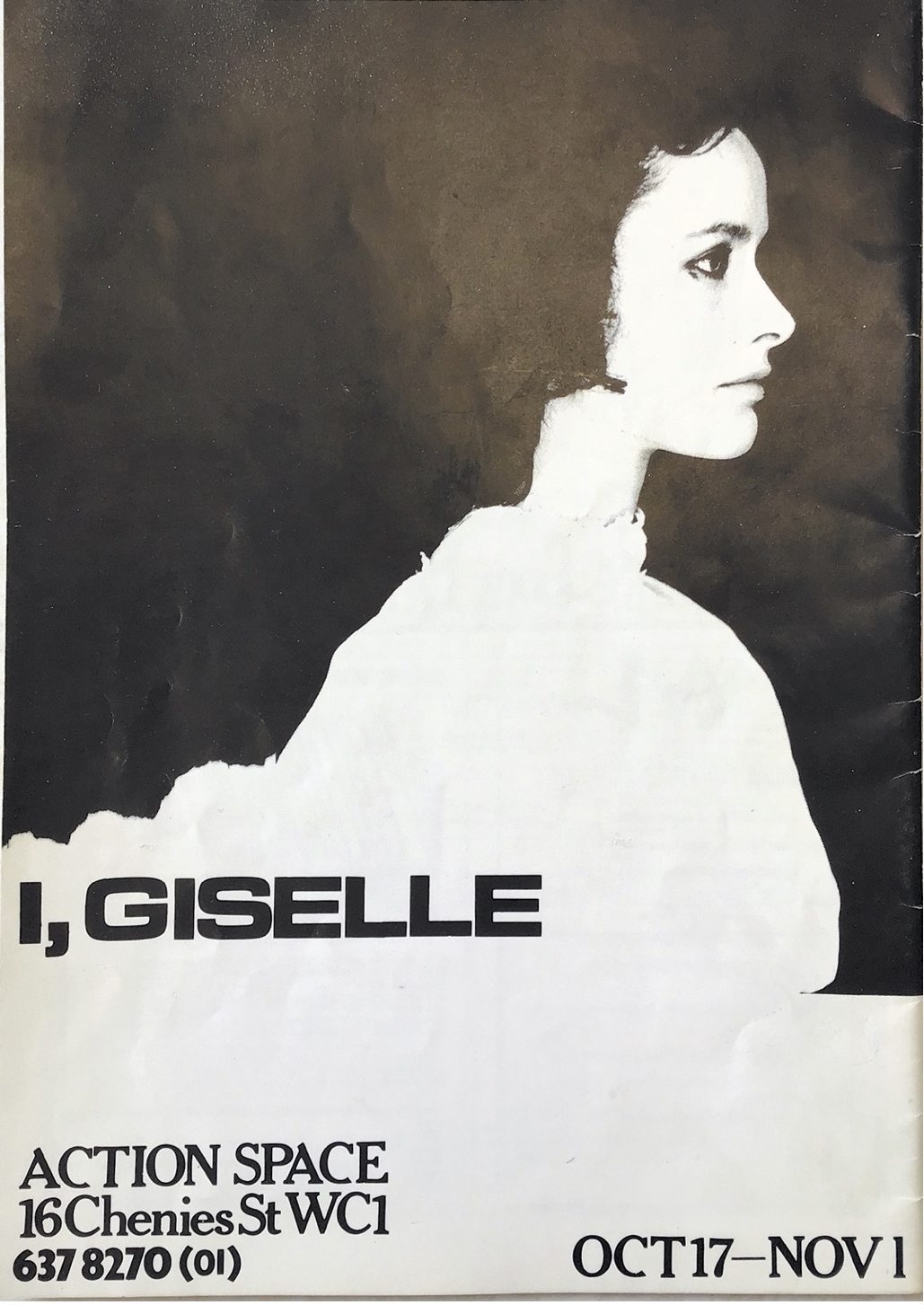
REVIEWS
“My attention was captured right through the performance….I really liked the way the characters related to one another through expression, voice and song. Usually dancers have a neutral expression on their faces and this always seems life-denying to me. In I,Giselle movement was beautiful to watch”
Mary Middleton in Spare Rib
“…..The romantic hero, not the romantic heroine, goes mad. The heroine’s mother is a charmer and a healer…The idea is lovely, but what graces this production is it’s style – a piece of clean modern theatrical carpentry involving dancers, songs, back projections, taped music and yet with space for spontaneity, friendliness, conversation and domesticity…..If this is a view from the other end of the telescope, we should have more of it.”
Bill Harpe in The Guardian (November 14 1980)
“I,Giselle attempts to deconstruct the original’s implicit assumptions about class and sexuality. Jacky is most concerned with the transformation of the character of Giselle herself. The new piece, for example, rounds out her relationship with her mother, showing it as one of learning and support… In the new piece , Giselle is not taken in by the handsome prince. She knows what he is up to, and taxes him with it, exposing his soft white hands, betrayers of his class origins in a lever piece of mime. In the climactic mad scene, kept from the original, it is not Giselle who goes mad, but the rest, presented as her class mates in a ballet scene, driven mad by the increasingly frantic efforts to conform. The new Giselle questions the ‘female as victim’ role, and tries to expose it. Just why does Giselle go mad at the moment of awareness, just as her anger at Albrecht’s deception breaks out?”
Lynn MacRitchie in Women’s Performance 2 (extract from an interview article with Jacky Lansley)
‘I, Giselle’ slide art work by Jeanette Iljon
